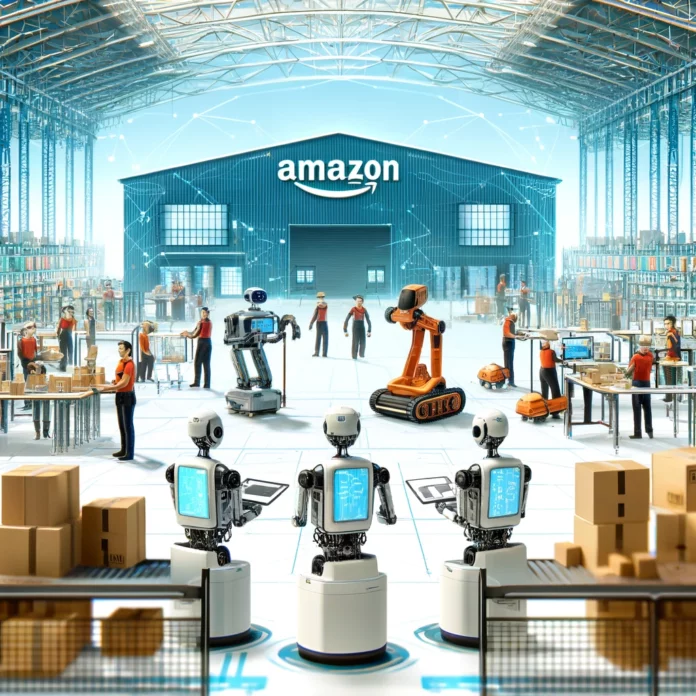Amazon.com Inc., known for its massive scale and technological innovations, has reached a new milestone in its integration of robotics by deploying over 750,000 robots, a significant increase from the 520,000 reported in 2022. This development comes as the company’s human workforce has seen a reduction of over 100,000 employees since 2021.
The rapid increase in robots, including advanced models like Sequoia and Digit, underscores Amazon’s drive to enhance efficiency, safety, and speed in its operations. Sequoia enhances inventory management and order processing, while Digit, developed with Agility Robotics, handles more physical tasks such as moving objects within fulfillment centres.
Despite the decrease in human employees, Amazon highlights that the robots are introduced to work alongside humans, not replace them. The company points out that this strategy has led to the creation of new skilled job categories, suggesting a shift in the workforce toward roles that require more specialized skills.
The substantial investment in robotics raises concerns about job displacement and the broader implications for the workforce. Studies, such as those from MIT, have documented the negative impacts industrial robots have on jobs and wages in their operational areas. This automation trend sparks a significant debate about the future of work and the balance between technological advancement and employment.
Amazon’s use of robots aims to streamline operations and ensure quicker delivery times, which is crucial for maintaining its competitive edge in the e-commerce market. The company emphasizes that these technological advancements are also geared towards improving workplace safety and expanding product availability for faster delivery options.
As Amazon continues to lead in integrating robotics into its operations, it serves as a case study for the potential shifts in industry standards across the global economy. The challenge remains to balance efficiency gains with the socio-economic impacts, ensuring equitable benefits from automation across its workforce.
This development in Amazon’s operational strategy highlights the evolving landscape of employment in the age of automation, posing critical questions about the future roles of human labor in technologically driven business models.
